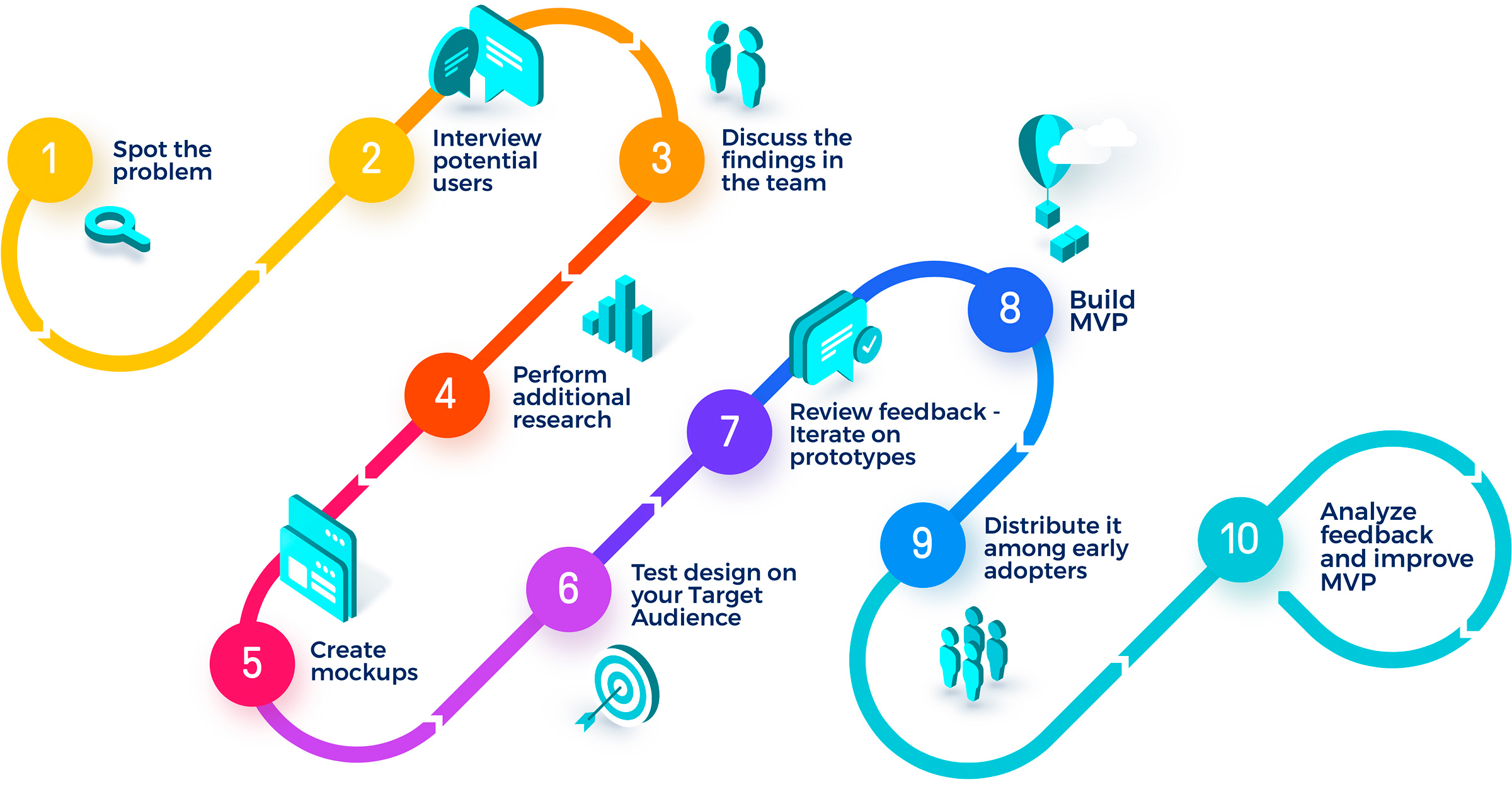Design thinking & Product development
It's almost impossible to have a UX portfolio without mentioning the process. I've worked with so many various types of teams and companies and learned to be agile and flexible, so my process has always been adjustable depending on the need and the available resources for the project.

User Experience is never really "done". Products should evolve, with time, together with it's users. That's why product design is an iterative process, it should be flexible and it all comes down to collaboration between designers and users. My process is the design thinking process; it starts with defining the problem and then progressing forward to solve it though ittertative stages and experiments based on feedback and communication with users and stakeholders.
1. Spot the problem
Is it a new feature request? Something we discovered while (user) testing? Or maybe the data we're analysing indicates that someting isn't working as we hope it should...
2. Interview users
Let's talk to our users about this issue. What do they think? How do they feel? What do they do? We need insights, sticky notes and coffee.
3. Internal discussions
Design is teamwork. Let's share our insights, feedback, ideas, questions and concerns. Stakeholders and Product Owners usually sits on a tons of good information about the product that might be usefull too!
4. Additional research
So is there any existing solutions out there? How did competitor X tackled this issue? Are there any other related issues we should be aware about? Is this really an issue we should be focusing on rigth now? Do we have to fix it?
5. Create mockus
The ideation phase can have multiple deliverables; wireframes, mockups, prototypes...
6. Test on users
Share a demo and get feedback.
7. Iterate on prototypes
Throughout the prototype stage, the proposed solutions may be accepted, improved, redesigned or rejected depending on how they fare in prototype form.
8. Build - Test - Learn
Figure out what the MVP is and handover to the developement.
Demo the solution for the users and (beta) release. Sometimes it's better to release to some of the users in order to make sure that everything is working properly before doing a general release.
Gather data and feedback while planing and implementing improvements and features.

Design Thinking is a mindset, not a toolkit or series of steps.
Arne Van Oosterom
Basic Principles
Design is not just how it looks or feels - It’s how it works too.
Good UX is based on empathy.
Good design improves understanding.
Design is about experimentation.
Good design is teamwork.
Design must be measured and tested.
Design is an ongoing process - not a project.
Design with data & contex in mind.
Kill your darlings.
Know when to break the rules.

Design is not just what it looks like and feels like. Design is how it works.
Steve Jobs
Best Practices
Fail early and cheap.
Become data-driven.
Scale quickly with design system libraries.
One source of truth for everyone.
Formalize design and code conventions.
Generate style guides, specs, and documentation.
Have daily standups with the team.
Schedule weekly demo sessions with users and the team.
Contact
If you’re looking to hire a product designer, I’d love to chat. I particularly enjoy working with small to medium-sized companies that have an excellent culture. Let’s connect!
